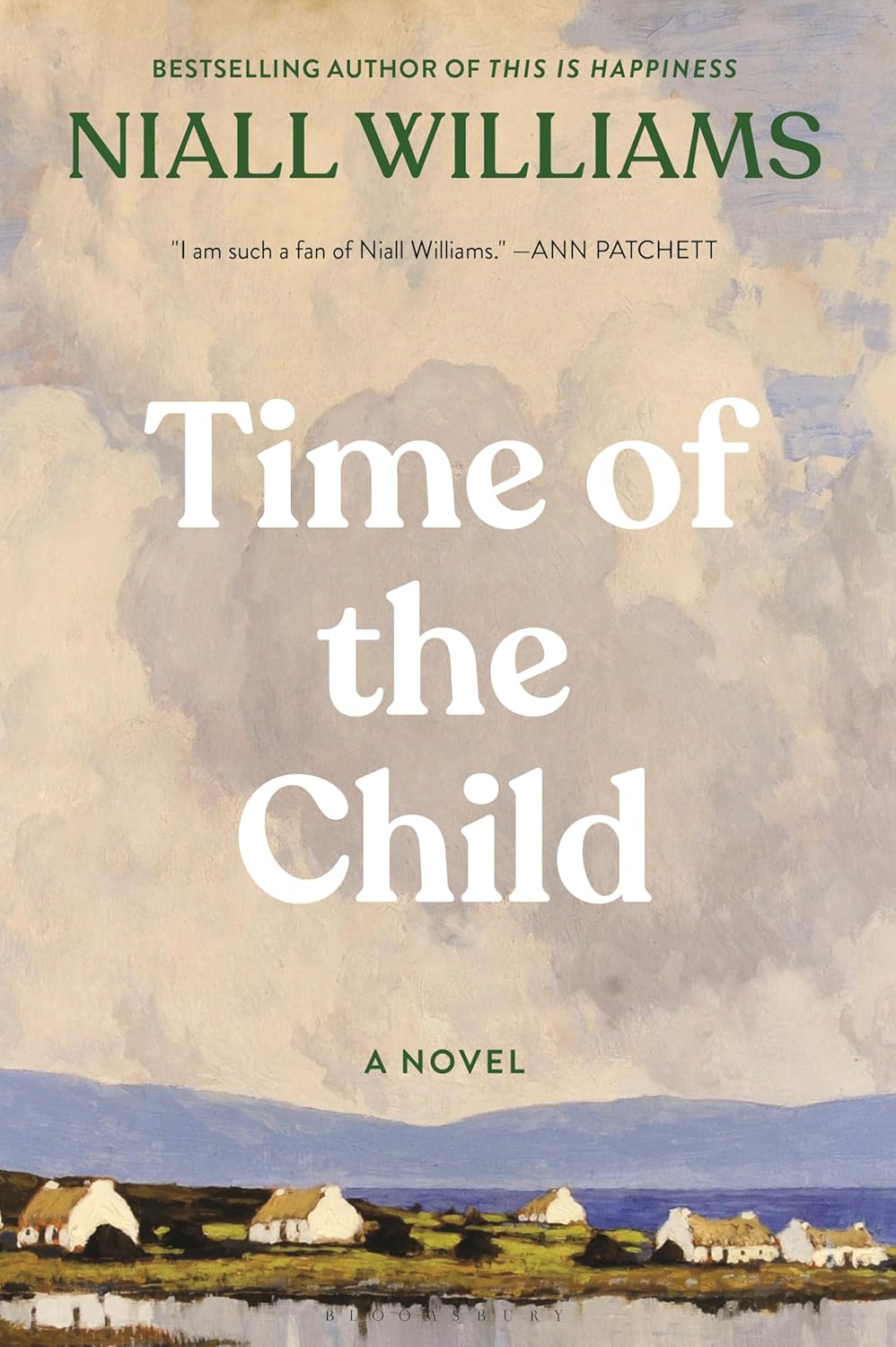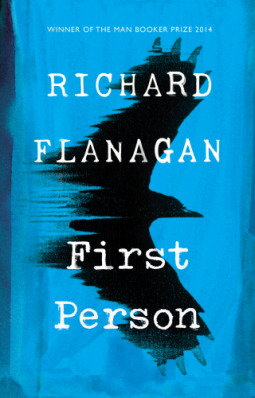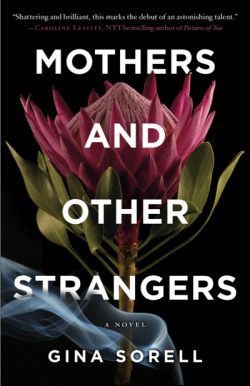Time of the Child: A Novel
- By Niall Williams
- Bloomsbury Publishing
- 304 pp.
- Reviewed by Alexandra Grabbe
- November 26, 2024
The wry, generous Christmas tale you didn’t know you needed.

“Like waking up on a misty morning and realizing the weather is still rain, glancing around the kitchen at family members, one involved in a book, another deep in her own thoughts, a third slowly devouring a bowl of GF cereal with nuts and raisins, although she is laboriously removing the raisins and stacking them on the small plate…”
Nothing much is happening in this passage from Niall Williams’ wondrous Time of the Child, but nothing much happens in everyday life, either. Here, three girls are simply having breakfast with their father. Yet it’s thanks to Williams’ prodigious talent that an otherwise mundane scene comes into such sharp focus. With just a word or image, you can picture the people so well.
It’s Christmas 1962 in Faha, County Clare, a fictional village in the west of Ireland that figured prominently in Williams’ prior novels History of the Rain and This Is Happiness. In Faha, rain is so frequent that “waterproofing became a nonsense term.” Residents remember the installation of electricity and know which neighbors chose not to get it, their homes “infused with the smells of turfsmoke, tea, wax, milk, bacon, cabbage, leather, rope and paraffin.” The impatient reader may scratch her head and wonder when Williams will launch the plot. He does so eventually, but not until 100 pages in. Believe me, the wait is worth it.
First, we meet the main characters, each unique in their own way: senile priest Father Tom; indomitable postmistress Mrs. Prendergast; 12-year-old Jude Quinlan, who plays a key role in the story; twins Tim and Tom Talty, who drive a tractor rather than a car; and Jack Troy, Faha’s doctor, who lives with his eldest daughter, Ronnie, in a “falling-down house” overlooking the River Shannon. An aspiring writer and nascent spinster, Ronnie works as a receptionist for her father’s practice.
Dr. Troy has served the people of Faha for 43 years. He cares about his patients and doesn’t regret his profession, despite the fact that “melancholy was an occupational hazard of the General Practitioner.” He recalls his physician-father’s admonition that “what the patient wants is for you to be a doctor, not wringing your hands, not weeping, not anything in fact like a human being. A doctor.”
Life is bleak in Taha, but Williams doesn’t hesitate to balance the narrative with humor. After one house call, for instance, Dr. Troy, echoing his father’s long-ago standard diagnosis, tells a patient, “It will get better, get worse, or stay the same.”
Throughout the novel, the prose is studded with universal truths that prompt readers to pause and consider the human condition:
“Regret is a fruit of age. The longer you live the more you know its sour taste.”
“Only through the birth of a child is the fear of death conquered.”
“What if it’s the people that have a higher sense of what’s right and wrong than those conscripted to enforce it?”
In Faha, the holidays involve the fastidious preparation and bestowing of Christmas boxes lovingly organized by merchants for their faithful customers. On Christmas Eve — when “the day was dry and for a time the river wore the clear sky like a silk” — during Midnight Mass in the “small and crowded” church, the townspeople witness a most unusual event, one that helps us understand the novel’s title.
Although set in the mid-20th century, Time of the Child made me feel as if I’d taken a marvelous trip to the distant past. This is a story to read slowly, to savor, and to return to again and again. I suspect that when I pick it back up in years to come, rediscovering Williams’ characters will feel like a reunion with old friends.
Alexandra Grabbe is a former talk-show host in Paris, a former green innkeeper on Cape Cod, and a forever writer who grew up in Washington, DC, playing Wiffle ball with her brother on the front steps of their home in American University Park. She attended the Madeira School and Vassar College. Her most recent nonfiction appears in HuffPost Personals. Academic Studies Press’ fiction imprint Cherry Orchard Books published The Nansen Factor: Refugee Stories, a collection of her linked short stories, in May.

